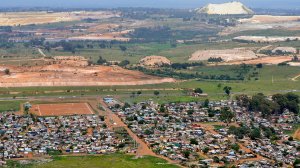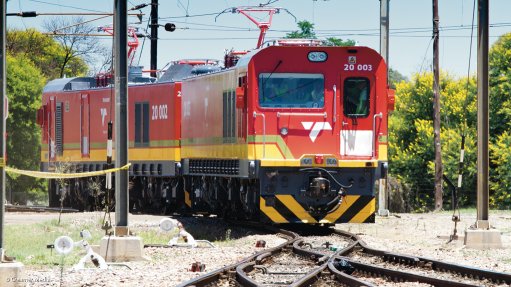Mine closure lacks adequate social integration – research
New research on mine closures in South Africa has shown that there remains a lack of integration of social development, which continues to pose a risk to long-term regional development beyond mining activity.
There also continues to be uncertainty on the continuity of projects when assets are bought by another company, which often happens when mines near their end of life.
“There are 230 operating mines spread across the country, variously located in diverse natural environments near cities, townships and rural villages. Many community members living nearby are dependent on mining for jobs and local businesses. These communities will be significantly affected by mine closures,” University of Cape Town (UCT) research fellow Dr Megan Cole said, presenting her findings in a webinar hosted by the Southern African Institute of Mining and Metallurgy on November 22.
The three-year research project on national mine closure risks and opportunities has been undertaken by UCT and funded by the Water Research Commission. The research project started in April 2021 and is expected to be completed by March next year.
Cole’s research is made up of four main components. The first is to describe case studies of post-closure land use and highlight some of the best practices happening in the country. The second component was the development of a mine closure risk rating system.
Thirdly, the research team will be publishing a mine closure risk and opportunity atlas, which is an online geographic information system (GIS) tool.
Lastly, the fourth component is proposing a new post-closure opportunity framework.
The webinar looked at a new national mine closure risk rating system and post-closure land-use opportunity framework for South Africa, supported by a South African mine closure risk and opportunity atlas developed in software platform ArcGIS. Risk ratings have been calculated for the likelihood of closure, social impact, and environmental impact for all mines in the country based on more than 20 national datasets.
The post-closure land-use opportunity framework incorporates community values and stakeholder engagement, identifying all possible land-use alternatives, and a screening process based on numerous environmental, social, economic, and technical influencing factors and measurable indicators. While it has been developed for South Africa, the concept, design and insights have been aimed at being able to be applied to any mining country in the world.
“Mine closure is an inevitable part of mining. It occurs when the resource is depleted or when it's no longer economically viable. At a minimum, it involves rehabilitation and decommissioning of associated facilities and infrastructure. But current best practice asks for a lot more than that,” Cole said.
She explained that mine closure now required that planning start at the onset of mining with a conceptual plan during exploration, and then increasing detail over the life of the mine. It was also meant to integrate social, environmental and economic considerations and incorporate a wide number of stakeholders in the process.
“What we've seen is that deferred mine closure planning results in unmanaged impacts and liabilities, which often leads to operations being placed on care and maintenance,” she said.
Cole explained that her research project had determined three main types of risk: the likelihood of closure, social risk and environmental risk.
An online GIS-based platform application – for desktop computers, laptops and mobile devices – was then developed to communicate and assess mining closure risks. More than 60 spatial datasets have been incorporated across 220 operating mines and about 350 host communities, with baseline data and community topologies included.
“What we really wanted to do is make this both interactive and accessible to anyone involved or affected by mine closure. So we created an online GIS-based platform that will both communicate these risks and opportunities, but also allow the user to interact with it and understand the deeper implications. The thinking there was we want people living in mining communities with access to computers to be able to access this. So they can actually obtain information about the mines operating in their areas, and then the risks that they may face,” Cole explained.
Finally, the post-closure opportunity framework was designed to identify viable opportunities for post-closure land use and economic diversification around mines.
Cole said public participation and a clear definition of the overall goal for the community and region were essential.
She said the mine closure risks and opportunities atlas should be used as a tool to support decision-making and that it could be incorporated into the process of drawing up mine closure plans.
Comments
Press Office
Announcements
What's On
Subscribe to improve your user experience...
Option 1 (equivalent of R125 a month):
Receive a weekly copy of Creamer Media's Engineering News & Mining Weekly magazine
(print copy for those in South Africa and e-magazine for those outside of South Africa)
Receive daily email newsletters
Access to full search results
Access archive of magazine back copies
Access to Projects in Progress
Access to ONE Research Report of your choice in PDF format
Option 2 (equivalent of R375 a month):
All benefits from Option 1
PLUS
Access to Creamer Media's Research Channel Africa for ALL Research Reports, in PDF format, on various industrial and mining sectors
including Electricity; Water; Energy Transition; Hydrogen; Roads, Rail and Ports; Coal; Gold; Platinum; Battery Metals; etc.
Already a subscriber?
Forgotten your password?
Receive weekly copy of Creamer Media's Engineering News & Mining Weekly magazine (print copy for those in South Africa and e-magazine for those outside of South Africa)
➕
Recieve daily email newsletters
➕
Access to full search results
➕
Access archive of magazine back copies
➕
Access to Projects in Progress
➕
Access to ONE Research Report of your choice in PDF format
RESEARCH CHANNEL AFRICA
R4500 (equivalent of R375 a month)
SUBSCRIBEAll benefits from Option 1
➕
Access to Creamer Media's Research Channel Africa for ALL Research Reports on various industrial and mining sectors, in PDF format, including on:
Electricity
➕
Water
➕
Energy Transition
➕
Hydrogen
➕
Roads, Rail and Ports
➕
Coal
➕
Gold
➕
Platinum
➕
Battery Metals
➕
etc.
Receive all benefits from Option 1 or Option 2 delivered to numerous people at your company
➕
Multiple User names and Passwords for simultaneous log-ins
➕
Intranet integration access to all in your organisation



















